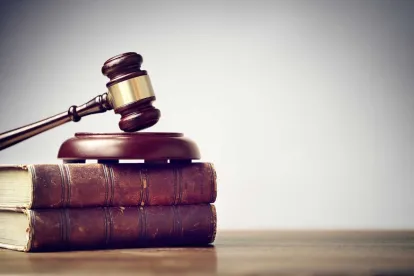Over the past five years, five of the six Administrative Law Judges (ALJs) at the International Trade Commission (ITC) have retired and four new ALJs have been appointed. Former Chief Judge Charles Bullock, along with Judges Theodore Essex, Thomas Pender, Dee Lord, and David Shaw have all retired and, in their place, Chief Judge Clark Cheney, Cameron Elliot, Monica Bhattacharyya, and Bryan Moore have been appointed (with one vacancy remaining). Only Judge MaryJoan McNamara has been on the bench more than five years.
Because each ALJ sets their own ground rules, this turnover has led to significant changes in how Section 337 investigations are conducted. While the Code of Federal Regulations has regulations that apply to Section 337 investigations,1 these regulations leave a significant amount of discretion to the individual ALJs to set rules for the investigations that they preside over. For example, in their ground rules, ALJs set rules for written discovery requests, claim construction, motions for summary determination, and the evidentiary hearing.
One aspect of each ALJ’s ground rules that is particularly noteworthy is whether direct testimony of non-adverse witnesses at the evidentiary hearing is live or in the form of witness statements. Unlike in district court litigation, ALJs can require non-adverse direct witness testimony to be submitted in written witness statements. Direct witness statements are sworn written statements drafted in Q & A format that are signed by the witness. If direct witness statements are required, they are typically submitted a few weeks before the evidentiary hearing (often at the same time that direct exhibits are exchanged). Then, at the hearing, once the witness is sworn in, the witness statement is admitted into evidence (subject to the resolution of any objections) and oral testimony begins with cross-examination.
Five years ago, five of the six ALJs required the use of witness statements in place of live testimony for non-adverse direct testimony2 with only Judge McNamara requiring live direct testimony.3 However, with the turnover in ALJs, there has been a shift toward live testimony — now, four of the five ALJs require live testimony for all direct testimony with only Judge Moore requiring witness statements for non-adverse direct testimony.4
The form of direct witness testimony can be a significant factor in how to plan and conduct an evidentiary hearing. Most notably, live direct testimony takes a significant amount of time. As evidentiary hearings are typically limited to five days, when live direct testimony is required, time management is especially important and litigants may need to prioritize certain issues. Live direct witness testimony also requires additional witness preparation and can make coordinating witness schedules more complex.
Conversely, when direct witness statements are required, litigants need to have much more of their case finalized well before the evidentiary hearing. As direct witness statements are typically exchanged weeks before the hearing, litigants have less flexibility to adjust their case at the hearing.
In short, with the shift in ITC judges, the evidentiary hearing has taken on an even greater importance in Section 337 investigations.
FOOTNOTES
1 https://www.usitc.gov/intellectual_property/section_337_rules.htm
2 See, e.g., Color Intraoral Scanners and Related Hardware and Software, ITC-337-TA-1091, Order 2 at G.R. 9.3 (Dec. 2, 2017) (CALJ Bullock); Certain Graphics Processors and Products Containing Same, Inv. No. 337-TA-1099, Order 2 at G.R. 14.3 (Feb. 5, 2018) (ALJ Pender); Certain Solid State Storage Drives, Stacked Electronics Components, and Products Containing Same, Inv. No. 337-TA-1097, Order 2 at G.R. 9.3 (Jan. 23, 2018) (ALJ Lord); Certain Microperforated Packaging Containing Fresh Produce, Inv. No. 337-TA-1096, Order 2 at G.R. 8(a) (Jan. 24, 2018) (ALJ Lord); Certain X-Ray Breast Imaging Devices and Components Thereof, Inv. No. 337-TA-1063, Order 2 at 9.4.1 (Aug. 1, 2017) (ALJ Essex).
3 See, e.g., Certain Mobile Electronic Devices and Radio Frequency and Processing Components, Inv. No. 337-TA-1093, Order 2 at G.R. 8.3 (Jan. 19, 2018) (ALJ McNamara)
4 See, e.g., Certain Pillows and Seat Cushions, Components Thereof, and Packaging Thereof,Inv. No. 337-TA-1328, Order 2at G.R. 13.6.1 (Sept. 14, 2022) (CALJ Cheney); Certain Smart Thermostat Hubs, Systems Containing the Same, and Components of the Same, Inv. No. 337-TA-1339, Order 2 at G.R. 8.4 (Oct. 20, 2022) (ALJ McNamara); Certain Electronic Devices, Semiconductor Devices, and Components Thereof, Inv. No. 337-TA-1340, Order 2 at G.R. 10.2 (Oct. 20, 2022) (ALJ Elliot); Certain Semiconductor Devices, Mobile Devices Containing The Same, and Components Thereof, Inv. No. 337-TA-1336, Order 2 at G.R. 10.2 (Oct. 14, 2022) (ALJ Bhattacharyya); Certain Pneumatic Compression Devices and Components Thereof, Inv. No. 337-TA-1316, Order 2 at G.R. 13.6.1 (June 6, 2022) (ALJ Moore).




 />i
/>i

